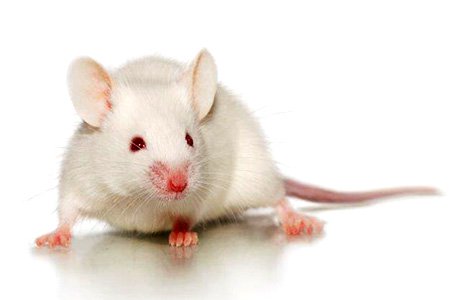 Immune system engrafted mouse models are becoming more widely used in immuno-oncology research. As their universe of applications grows, questions invariably arise. Our immune system engraftment experts collected answers to a few of these commonly asked questions.
Immune system engrafted mouse models are becoming more widely used in immuno-oncology research. As their universe of applications grows, questions invariably arise. Our immune system engraftment experts collected answers to a few of these commonly asked questions. huNOG mice are NOG mice engrafted with human CD34+ hematopoietic stem cells (HSCs). They display stable engraftment of multiple cell lineages by 12-16 weeks post-injection. Human lymphocytes are present in peripheral blood, bone marrow, thymus and spleen. Long term studies are possible in huNOG mice, with literature reports of stable engraftment and hematopoiesis for one year or more. However, members of the myeloid cell lineages and NK cells are poorly represented or poorly functioning. Not all human immune cell types are present, and some cell types may not be completely functional.
huNOG questions
A. Tumors were engrafted between 10-12 weeks post-HSC engraftment.
Q. To clarify, were the tumors tissue-matched to the immune system donor in the huNOG mice? Or can any tumor samples/lines be used?
A. For the Champions study presented, the tumors were HLA-A2+ and were matched to HLA-A2+ donor HSCs used to generate the huNOG mice. This study matched just one major HLA group allele. Other researchers may be interested to do more extensive HLA matching, but the impact of more extensive HLA matching on tumor growth is not known. Mismatched immune cells and tumors may be used, but tumor growth may be slower with more immunogenic tumors. However, some researchers feel a mismatch may more accurately represent immune surveillance in a human patient. Tumor cells that successfully grow in an engrafted mouse with mismatched immune cells may represent cells that can evade the immune system. There is also the potential for activation of the immune system caused by the mismatch. This may be useful for immunotherapy proof of concept studies; it may be easier in a partially activated immune system to enhance the immune response to the tumor.
Q. When do you see human myeloid cells in huNOG after engraftment?
A. We would recommend doing an assessment of myeloid lineages in the huNOG at 16 weeks. They can be observed earlier, but they do take longer to expand. 16 weeks post-engraftment is an appropriate time point to look for them. In the hGM-CSF/hIL3-NOG mouse engrafted with HSCs, there is good myeloid cell expansion at 6-8 wks post-engraftment.
huPBMC-NOG questions
A. For the huPBMC-NOG model, we use the whole PBMC population. We can engraft sorted cell populations upon request.
Q. In the huPBMC-NOG system, are the PBMC injected fresh or after being cryopreserved?
A. Use of cryopreserved cells offers logistical benefits. Either fresh or cryopreserved is acceptable.
Q. Is it possible to extend the lifespan of huPBMC-NOG mice?
A. Yes, there are a few ways to do this. Onset of the graft versus host disease (GvHD) response is tunable in a few ways. Non-irradiated mice display increased survival time compared to irradiated mice. Lower PBMC doses show increased time to GvHD onset. Enrichment or strategic depletion of certain T cell subtypes can also affect survival time and severity of GvHD response (see Søndergaard et al. and Ishikawa et al.).
Another method to extend the lifespan of huPBMC-NOG mice would be to treat with a standard of care drug like Enbrel, but this will likely affect other parts of the immune system that might be of interest in a study.
General Immune System Engrafted Mouse Questions
A. There is no known data on metabolism differences in immune system engrafted mice.
Q. Other than bone marrow and spleen what other lymphoid tissues demonstrate normal immune cell infiltration, e.g. nasal-pharangeal (analogous to tonsils) and gut associated lymphoid tissue (GALT) and lung lymphoid tissues?
A. There is some research in this area. Mice lacking Il2rg such as the NOG or NSG do not have cryptopatches, whereas NOD scid mice do. The hGM-CSF/hIL3-NOG may have some degree of improved reconstitution of secondary lymphoid and non-lymphoid tissues compared to the NOG mouse, but this remains under investigation. There is a greater degree of normal human myeloid cell migration and chemotaxis in response to stimuli in CD34-HSC engrafted hGM-CSF/hIL3-NOG mice compared to NOG mice.
Q. Are the CNS resident macrophages, pericytes, microglia cells reconstituted with human cells?
A. We are not aware of any data on this.
Q. Which model is the best for detecting innate immune response?
A. If the interest is in the innate role of myeloid cell lineages, the best model will be the hGM-CSF/hIL3-NOG. HSC-engrafted hGM-CSF/hIL3-NOG mice should meet most study requirements. If NK cells are of interest, the best model will be the hIL-2 NOG engrafted with HSCs. If the interest is in the innate role of T cells, the huNOG would be ideally suited.
Didn't find your answer? Post your question here and our scientists will contact you.
Learn more about the Immune System Engrafted Mice
















.jpg)

.jpg)
.jpg)
.jpg)
.jpg)





.jpg)


.jpg)
.jpg)




.jpg)




.jpg)

.jpg)




